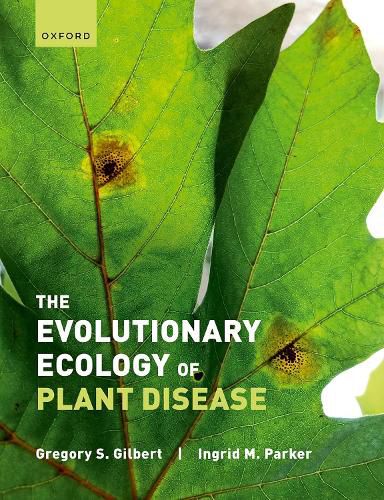Readings Newsletter
Become a Readings Member to make your shopping experience even easier.
Sign in or sign up for free!
You’re not far away from qualifying for FREE standard shipping within Australia
You’ve qualified for FREE standard shipping within Australia
The cart is loading…






Understanding the symbiosis between plants and pathogenic microbes is at the core of effective disease management for crops and managed forests. At the same time, plant-pathogen interactions comprise a wonderfully diverse set of ecological relationships that are powerful and yet so commonplace that they often go unnoticed. Ecologists and evolutionary biologists are increasingly exploring the terrain of plant disease ecology, investigating topics such as how pathogens shape diversity in plant communities, how features of plant-microbe interactions including host range and mutualism/antagonism evolve, and how biological invasions, climate change, and other agents of global change can drive disease emergence. Traditional training in ecology and evolutionary biology seldom provides structured exposure to plant pathology or microbiology, and training in plant pathology rarely offers depth in the theoretical frameworks of evolutionary ecology or includes examples from complex wild ecosystems. This novel textbook seeks to unite the research communities of plant disease ecology and plant pathology by bridging this gap.
$9.00 standard shipping within Australia
FREE standard shipping within Australia for orders over $100.00
Express & International shipping calculated at checkout
Understanding the symbiosis between plants and pathogenic microbes is at the core of effective disease management for crops and managed forests. At the same time, plant-pathogen interactions comprise a wonderfully diverse set of ecological relationships that are powerful and yet so commonplace that they often go unnoticed. Ecologists and evolutionary biologists are increasingly exploring the terrain of plant disease ecology, investigating topics such as how pathogens shape diversity in plant communities, how features of plant-microbe interactions including host range and mutualism/antagonism evolve, and how biological invasions, climate change, and other agents of global change can drive disease emergence. Traditional training in ecology and evolutionary biology seldom provides structured exposure to plant pathology or microbiology, and training in plant pathology rarely offers depth in the theoretical frameworks of evolutionary ecology or includes examples from complex wild ecosystems. This novel textbook seeks to unite the research communities of plant disease ecology and plant pathology by bridging this gap.